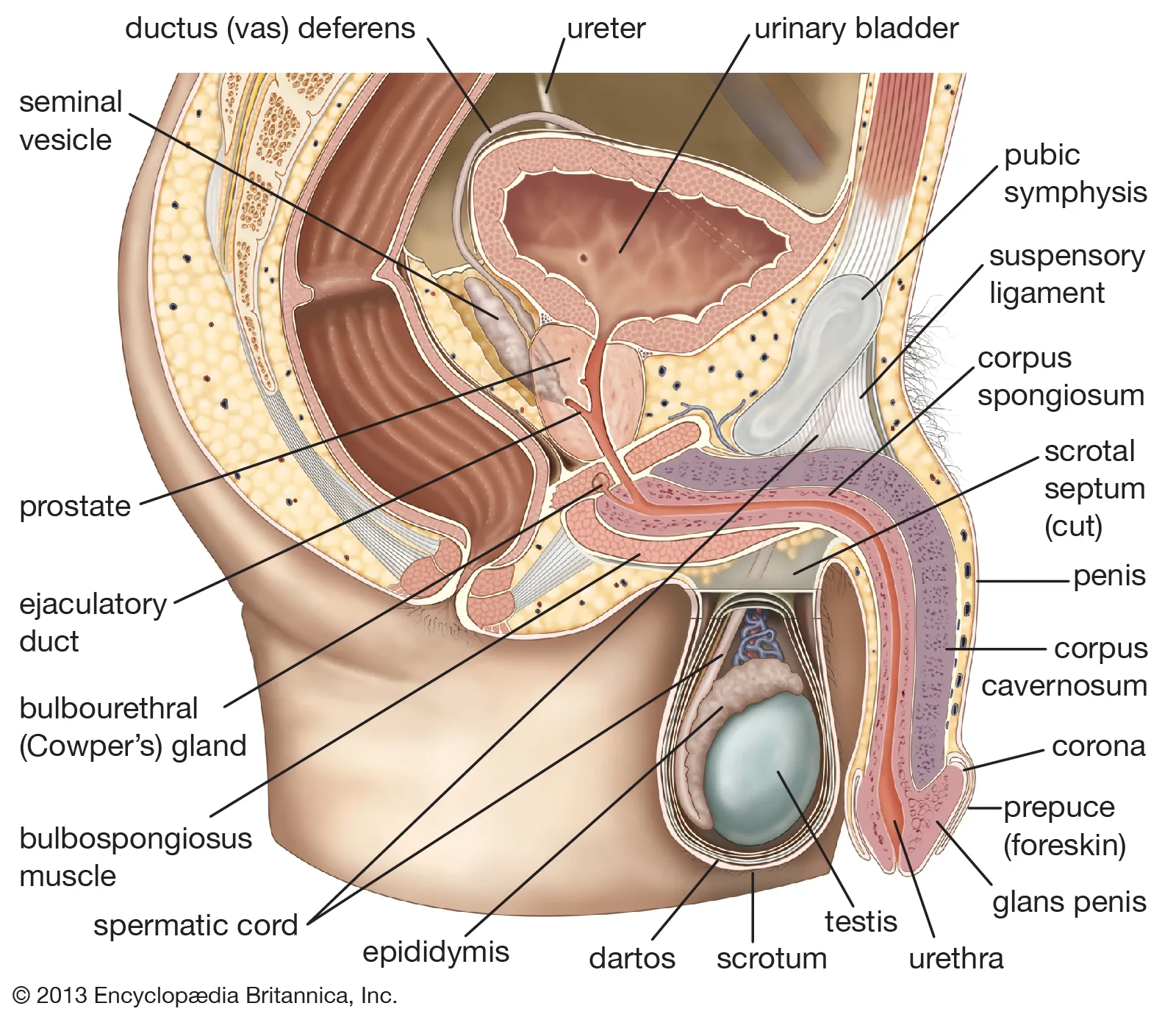Knowledge is always beneficial, especially when it helps you better understand your body. After all, you will still have to live with it for some time in the future! We will explain the anatomical structure of the penis to help you better understand how it works.
In this article, we will use the scientific names for each part instead of referring to it as the male genitalia, as not everyone agrees on the term "male genitalia". For information about the vagina, please refer to our "Vaginal Genital Anatomy" blog post.
You might have learned this before, but it wouldn't hurt to review it anyway! After all, not everyone is as attentive in biology class.

Penis - glans (Corpus Spongiosum) / corpus cavernosum
The glans is the sensitive bulbous head of the penis. It is part of the corpus spongiosum which extends inside the body. This spongy tissue prevents the urethra from closing during erection, by staying pliable.
The corpus cavernosum is sponge like tissue that fills with blood to expand and harden during erection.
Urethra
This is the tube that runs through the penis, allowing urine and ejaculate to exit the tip.
Prepuce / Foreskin
This is a retractable fold of skin that covers the glans. Before puberty it usually cannot be retracted. It protects the glans and helps with sexual pleasure as it has many nerve endings. *This does not mean that circumcised penises are less sensitive! You can read the differences between circumcised and uncircumcised here.
Testicles - testis / epididymis / scrotum
These are all involved in the process of sperm production, here is how it works:
The testis (testicle or ‘ball’) produces sperm and hormones.
The epididymis is the coiled tube that connects the testes to the vas deferens (see below). As the sperm pass through, they become mobile and fertile.
The scrotum is the pouch that holds and protects the testicles. When cold, the muscles pull the scrotum closer to the body to warm up, and relax in warm weather to lower the testicles away from the body to cool down (the amount of wrinkles on the scrotum varies greatly between these states).
It is normal for testicles to be slightly different sizes due to differences in blood vessels, and so hang at different heights.
Contrary to some memes, pee is not stored in the balls, but in the bladder.
Vas Deferens
This tube carries the sperm from the epididymis (see above) to the urethra. The muscles surrounding it contract to push the sperm forward. Along the way they combine various secretions (from the glands listed below) to form semen.
Seminal Vesicle / Seminal Gland
Most of the fluid in semen is produced in these glands. This includes many nutrients to support the sperm before fertilization.
Prostate Gland
This gland produces the milky-white, alkaline fluid in ejaculate. It helps motility of sperm and helps them survive in the acidic environment of the vagina.
Bulbourethral gland (Cowper’s Gland)
The fluid produced from this gland is different from semen, and is colloquially known as ‘pre-cum’. During arousal this liquid helps lubricate the urethra, as well as remove acidic urine that could damage the sperm.